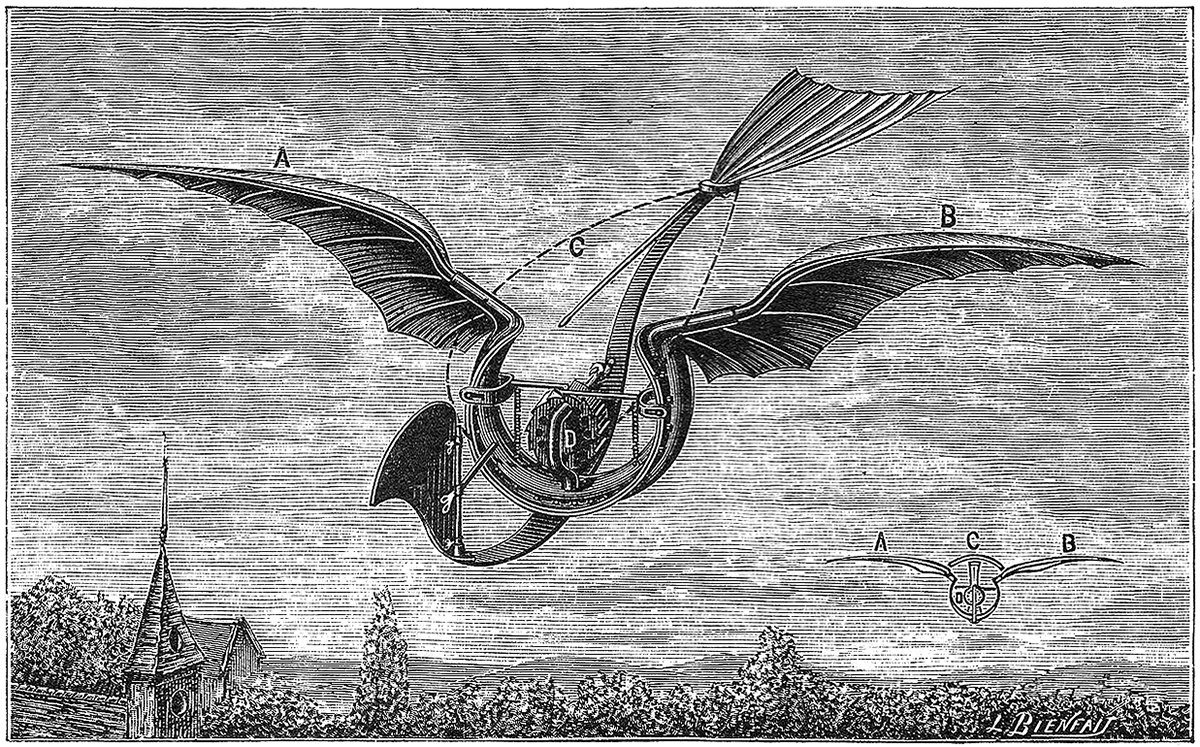Gustave Trouvé’s Flügelflieger
Illustration of Gustave Trouvé’s 1891 design for an ornithopter, called the Flügelflieger. According to Trouvé it successfully flew 80 meters (262 feet).
Pictured above is an ornithopter design from 1891 by French polymath and inventor Gustave Trouvé. It was called the Flügelflieger, which means winged flyer in German. It featured a pair of wings, a tail, a front rudder, and it was powered by a centrally-placed rapid-succession gun cartridge. This cartridge relied on small gunpowder charges that would ignite, pushing compressed air into a horseshoe-shaped Bourdon tube. This rapid pressure increase would cause the tube to quickly constrict due to the increased pressure. Then the pressure was released, causing the tube to snap back to its original position. Do this myriad times in rapid succession and the wings would quickly flap up and down, imitating the flapping of a bird’s wings during flight.
Due to the gunpowder charges, the machine was quite loud when flapping. It did work though; according to Trouvé it made a successful flight of 80 meters (262 feet) on 24 August 1891. This is considerably longer than any previous flight by a heavier-than-air flying machine, and it demonstrates that in concept, an ornithopter can achieve flight. It’s also a very crafty way to get a pair of wings to beat quickly, so much respect to Trouvé for working it out. With his Flügelflieger, Trouvé joins a long list of inventors and polymaths who turned their attention to flight at some point in their careers. Trouvé is one of the few that actually found success, and his design was one of the more unique ones throughout history.
Read more about other ideas for flying machines here.
Illustration and description from De Graffigny, Henry. Traité D’Aérostation: Théorique et Pratique. Paris: Librairie Polytechnique, 1891. 252-255.

